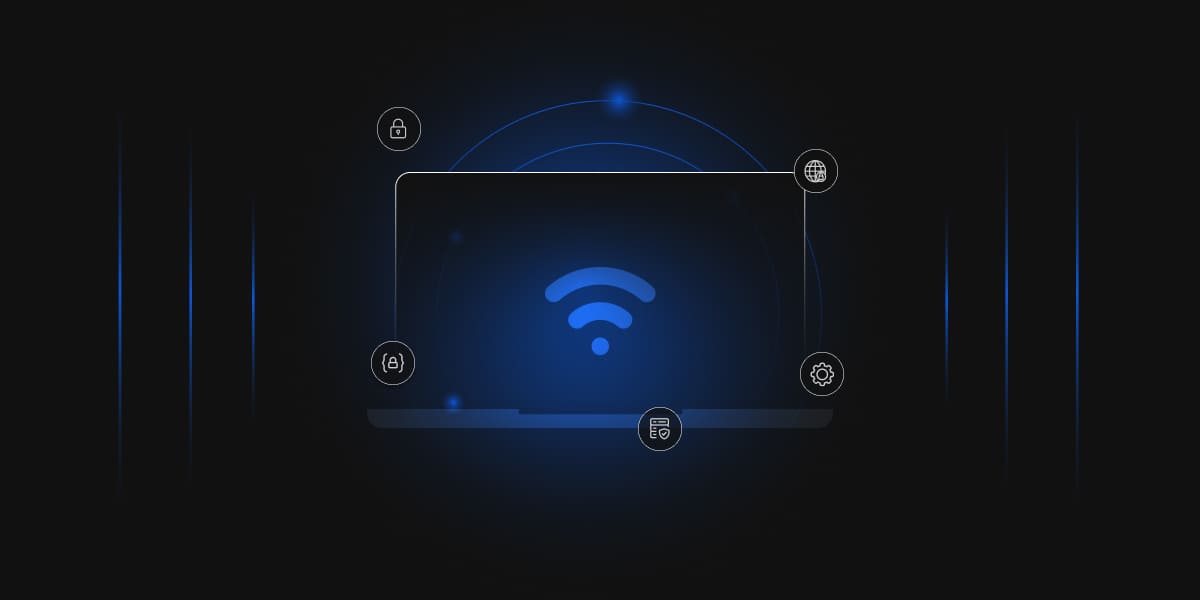WPA2 stands for Wireless Fidelity Protected Access 2 – Pre-Shared Key. It allows home users or small offices to secure their network without using an enterprise authentication server.
How WPA2-PSK works?
WPA2-PSK requires a router with a passphrase, with a length between 8 to 63 characters, to encrypt the data in the network. It uses a technology named TKIP, i.e., Temporal Key Integrity Protocol, that requires network SSID and the passphrase to generate unique encryption keys for each wireless client.
WPA2-PSK (AES) is more secure than WPA2-PSK (TKIP), but WPA2-PSK (TKIP) can be used with older devices that are not WPA2-PSK (AES) enabled devices.
When a user connects to the router, the user provides a password to authenticate their identity and, as long as the password matches, the user is connected to WLAN.
With WPA2-PSK, user can secure their data, transmitted through the wireless channel between a router and other network devices. It is the latest generation of Wi-Fi security where the key is shared between connected devices. WPA2-PSK is also known as WPA2 Personal.
Is WPA2-PSK vulnerable?
WPA2-PSK is designed for small offices and home networks to allow users to trust the network they are connected to. WPA2-PSK is secure but shares a password to all the users connected to the network, leading to snoop on the network by the attacker.
WPA2-PSK is also found in airports, public hotspots, or universities as it is easy to implement and requires only one password. But if your WPA2-PSK gets compromised, an attacker can easily get access to your network and is capable of doing the following malicious activities:
- Switch Spoofing
- Spanning Tree Protocol (STP) Attacks
- Dynamic Host Configuration (DHCP) Spoofing
- Media Access Control (MAC) Spoofing
- Double Tagging
- Address Resolution Protocol (ARP) Spoofing.
Using a single password for network access requires good faith to keep the password secret on every user’s device. The reason for this is that if one user gets compromised, then all users can be hacked.
Brute force attacks like dictionary attacks can be performed, and an attacker can decrypt all the device traffic if it obtains the Pre-Shared Key and capture the key handshake while a user joins the network.
Alternatives to WPA2-PSK
WPA2-PSK is secure enough for a home network as users can change passwords when they doubt that an unintended person is using it.
However, if users can not compromise with security, then WPA2-Enterprise can be used to provide different passwords to each participant and not allow access to the network as a whole. It isolates the network per user. The requirement of RADIUS in 802.1x implementation makes it complex, but for more security, 802.1x can be used, which allows authentication through certificates instead of credentials.
Secure Your 802.1x Network with WPA2 EAP-TLS Authentication
The larger organization can adopt WPA2 Extensible Authentication Protocol over Transport Layer Security. It uses AES encryption but adds username and password authentication. A user without a registered account or whose account is disabled cannot access the wireless network. The wireless network can be impenetrable to over-the-air attacks by certificate-based authentication that relies on EAP-TLS with server certificate validation. The unauthorized user cannot access the information being sent for authentication through an encrypted EAP tunnel, and the identifying information is only sent to the correct RADIUS through the server certificate validation process.
The implementation of WPA2 EAP-TLS can be an issue due to its complexity with its initial design and configuration. It can also be resource-intensive as it requires setting up and management of a Public Key Infrastructure.
Secure your network with WPA3
WPA3 removes the security issue by using individualized data encryption. If WPA3 is enabled and the user connects to an open Wi-Fi network, then the data transmitted between the device and the Wi-Fi access point will be encrypted. Even at the time of connection, the user does not enter any password.
Conclusion
Security is essential in this connected world. Our data should be secured and can only be accessed by the intended person. In today’s world of wireless networks, we should configure our network security to the latest so that no one can penetrate our network. Users should use WPA3 to improve the authentication and encryption while making the connection easier. WPA3-SAE (Simultaneous Authentication of Equals) replaced the WPA2-PSK authentication process. WPA3-SAE uses a 128-bit encryption key and Forward secrecy protocol to resist offline dictionary attacks while improving key exchange security without any additional complexity. On the other hand, WPA2-Enterprise is replaced by WPA3-Enterprise, which uses a 192-bit encryption key and a 48-bit initialization vector as requested by sensitive organizations.




